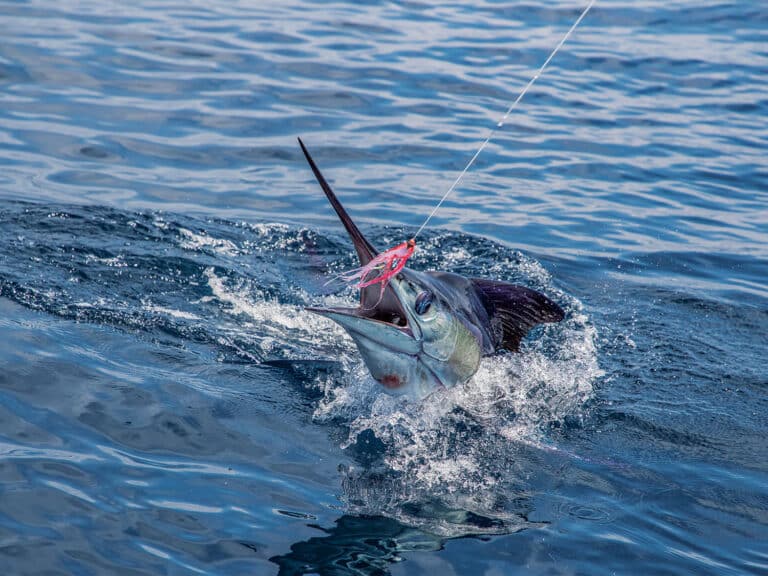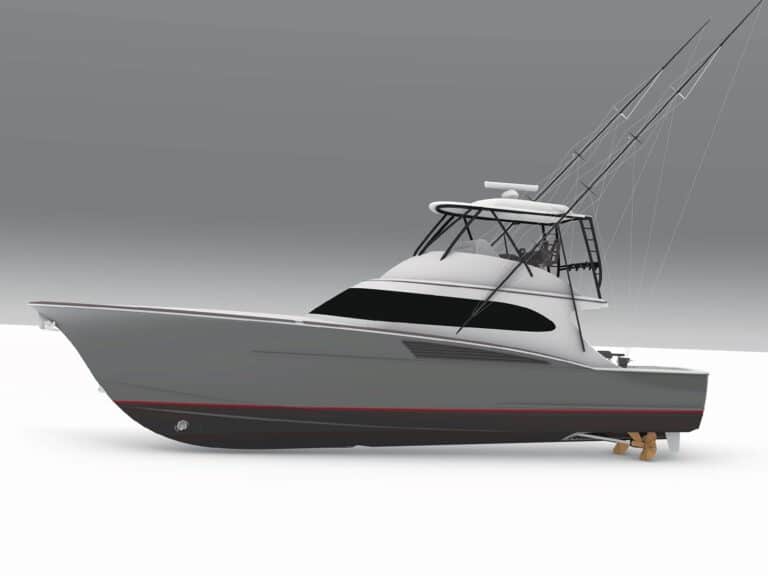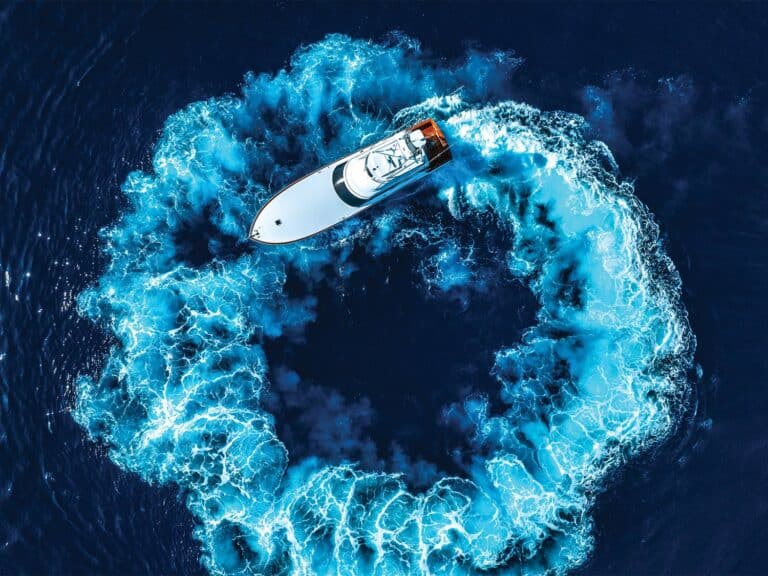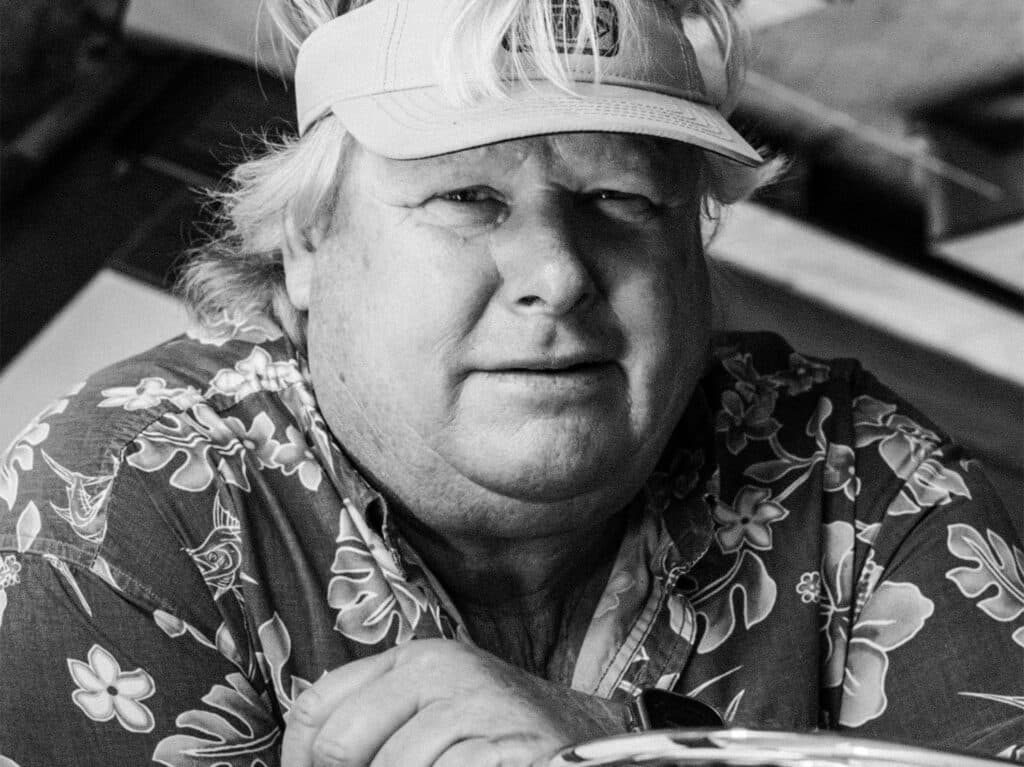
Special delivery: Sign up for the free Marlin email newsletter. Subscribe to Marlin magazine and get a year of highly collectible, keepsake editions – plus access to the digital edition and archives.
Born in Beach Haven, New Jersey, Capt. Karl Anderson was racing around the lagoon behind his parent’s home in an outboard-powered dinghy by the age of 5. By 16, he was running trips to the distant canyons of the Northeast, and loving every minute of his time offshore. Anderson graduated with a degree in telecommunications from Kutztown University in Pennsylvania, focusing on television production; from there, he became involved in the media side of the sport-fishing industry thanks to his numerous contacts. A busy career followed, as he captained and managed multiple sport-fishing operations while also becoming an accomplished journalist, photographer, and videographer. He has been a Marlin contributor for more than 20 years.
Q: You were recently selected as one of the IGFA’s Tommy Gifford Award recipients for 2023 as one of the sport’s top captains. What does that mean to you?
It’s incredibly humbling, that’s for sure. There is no way I would have imagined being in the same league as some of my idols growing up who were at the very top of their game and who were operating on such a professional level. It’s honestly hard to believe. And it takes a lot of people helping you—the owners and other captains I’ve fished with over the years, the mates and the anglers, having the opportunity to fish in a lot of different places and to learn a lot along the way. And I was very fortunate to work with Mark O’Brien for so long. I first met him in Bimini tuna fishing, then spent a week in Australia when he chartered Peter B. Wright—he had a little 37-foot Rybovich back in Florida, so I said if he ever wanted someone to look after the boat to let me know. He said he’d think about it; the next day, he called me, and now 30 years later, he’s still one of my best friends. We’ve had four boats together, including building a 72 Merritt, and we’ve traveled to some really great places over the years.
Q: You’ve been running boats professionally for a long time. What are some of the biggest changes you’ve seen, for better and for worse?
The good side has to be the integrated technology that’s now available. The composite boats today are just incredible. In 1975, loran-A was the hot technology and only the richest guys had it, and a 45-footer was a monster in the canyons, so that’s all changed. On the not-so-good side, the grip-and-grin glory and the onslaught of look-at-me on social media aren’t helping our industry. I’m all for it if you’re a charter boat—it’s like flying flags to let people know you’re on the bite—but I believe the self-glorification of fishing is hurting the sport.
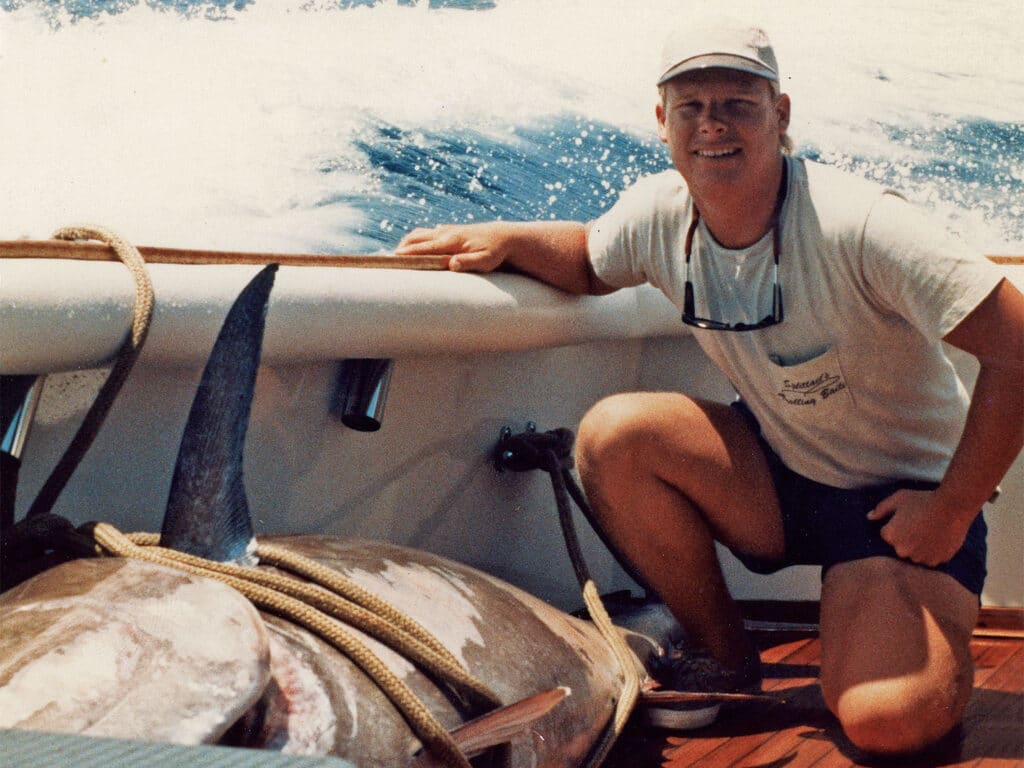
Q: You recently wrote about close calls at sea. What’s the most anxiety-inducing moment of your career?
I’ve had a few, but I think the key is to always be as prepared as possible. You have to look at the potential situations that could happen and then have plans to mitigate them if they come up. It doesn’t matter if it’s water in the boat, a fire, or whatever, you have to stay calm and think it through without panicking and making everyone else uncomfortable. I always hung out with great captains who were traveling all over the world—I listened and learned from them, and it served us well. With Mark, we lost only one day of fishing in 30 years across four different boats, and that was only because of an engine-part failure. When we were in Madeira in 2006, we spent six and a half months traveling and fishing from Gibraltar to Madeira and back to Genoa, and never had a failure of any kind. It’s the quality of the boat and your preparation—those are the biggest things.
Q: Favorite design: express, convertible or enclosed bridge?
I like them all for different reasons. When I was first coming up, I always wanted a 20-foot SeaCraft, a 43-foot Merritt and something bigger to travel, and I’ve had them all in my career. A walkaround is the best all-around fishing boat, a convertible can fish and cruise, and an enclosed bridge is great for traveling. We were one of the early ones to put a flats skiff on the bow of a 58 Merritt for shallow water, and we towed a center-console behind us, so we had it all covered.
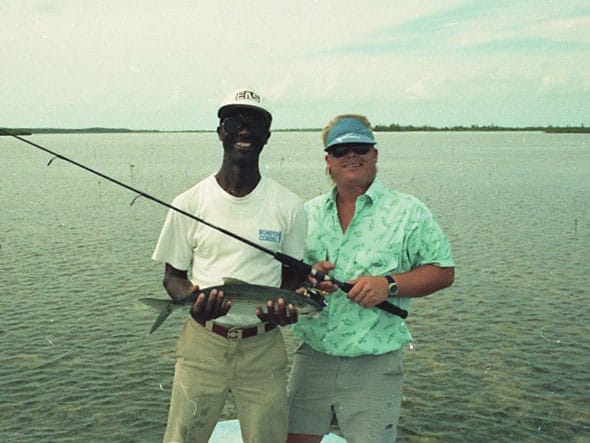
Q: You’ve been a broker for Merritt, and you’ve run quite a few. What first drew you to that builder?
I became a broker 15 or 20 years ago because I had people asking me to help them find a boat, that they were looking for this or that, mostly custom boats. But my first real look was when the 42-foot Cat’s Meow came to Beach Haven. I was always well aware of the boatbuilding that was happening in our backyard—Viking, Egg Harbor, Post, Pacemaker, Ocean—all the big names were in that area. I knew the Leeks and the Healeys, and I had worked on the Johnson and Towers company boat in the 1970s as a mate. But when that Merritt tied up, I just said, ‘Holy crow, look at that boat.’ In 1983, I was asked to be a mate on her for John Sabonis, fishing in Cat Cay and Bimini with Charles Perry as the other mate, and I’ve been hanging around the Merritt yard pretty much ever since. I moved to Pompano Beach full time in 2008, when we were building the 72. We recently finished a 15-month refit on the 42-footer Picaflor, which was a boat Roy Merritt built, and a lot of the guys who did the original work are still there today. That boat’s going back to Panama even better than she was before.
Q: What are some of your most memorable days at sea?
I really enjoy catching people their first fish, especially kids. When they catch their first sailfish or marlin, it’s an experience they’ll remember forever. A few special days for me would be double-digit blue marlin in St. Thomas on Cat’s Meow, bluefins in the Bahamas on that boat, and my son catching a 650-pound blue marlin by himself in Madeira.
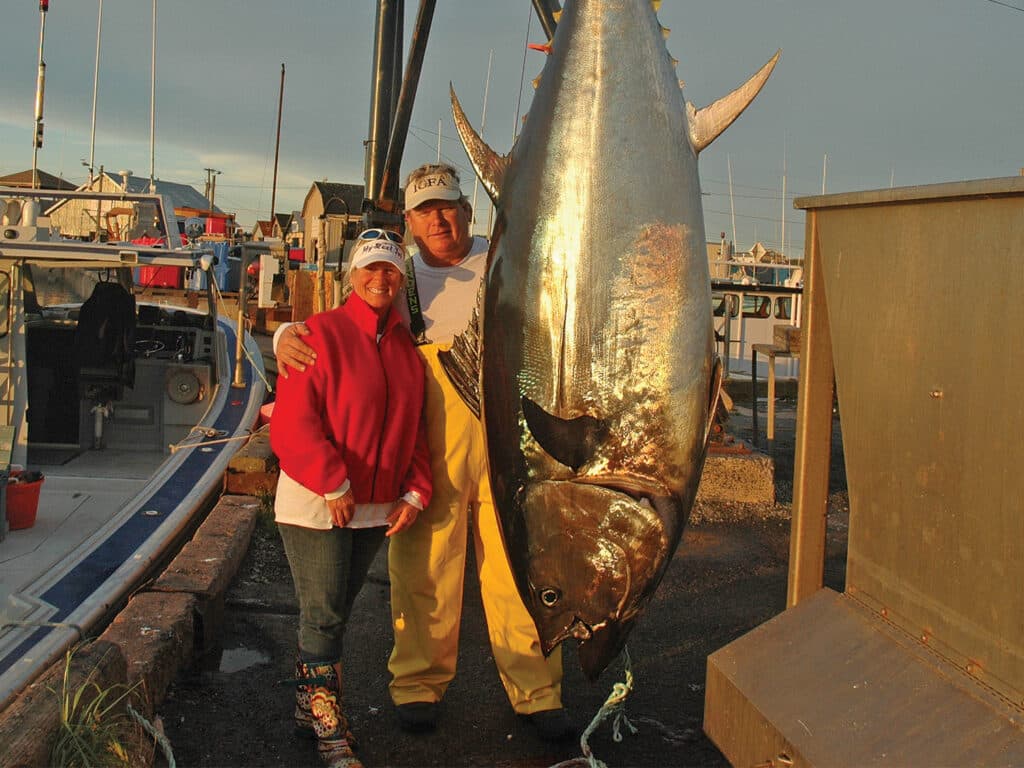
Q: If you had just one species to fish for the rest of your career, what would it be?
Good question. I’d have to say the big ones are my favorites—big blue marlin and bluefin tuna—but then I would miss the snook fishing and the striped bass fishing. I love it all.
Read Next: Check out Karl Anderson’s feature on handling close calls at sea.
Q: What are your plans for the future?
As I look at things now, I’m checking off the boxes, fishing new places and with people I haven’t had a chance to fish with yet. I’m going to Kona to fish with Kevin Nakamaru and Carlos Duncan—he called me up and said he’s running the Ironman there and asked if I wanted to go fishing, so I said sure, absolutely. So that’s really my goal: new places and new people.




